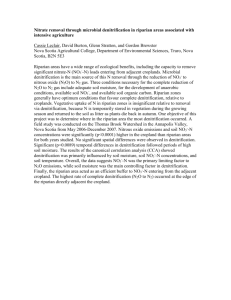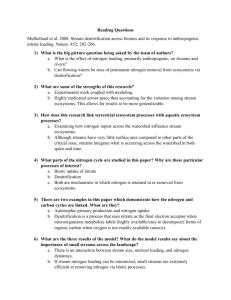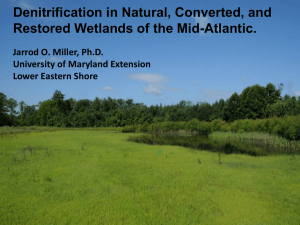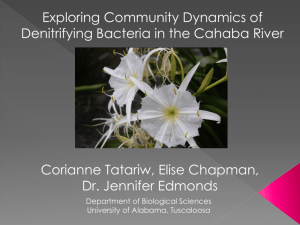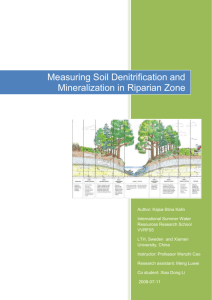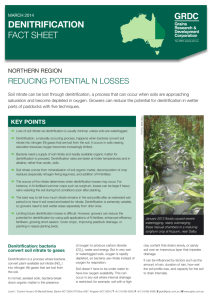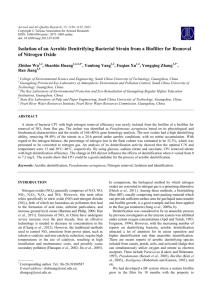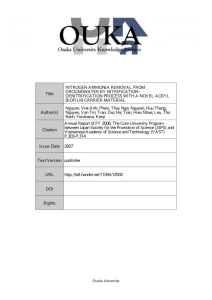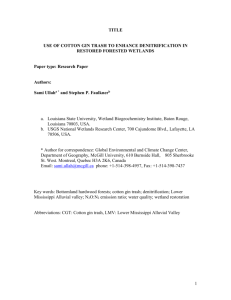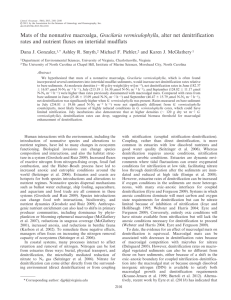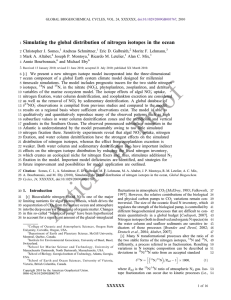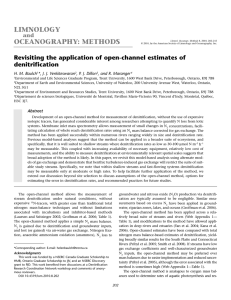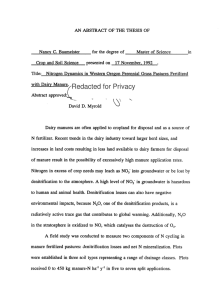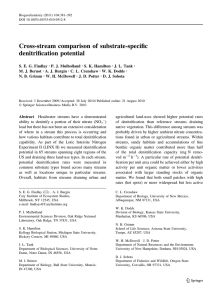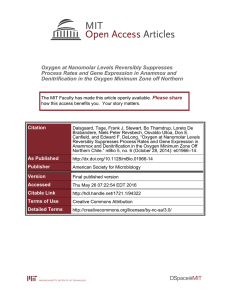(Rana dalmatina) has a very low degree of diversity
advertisement
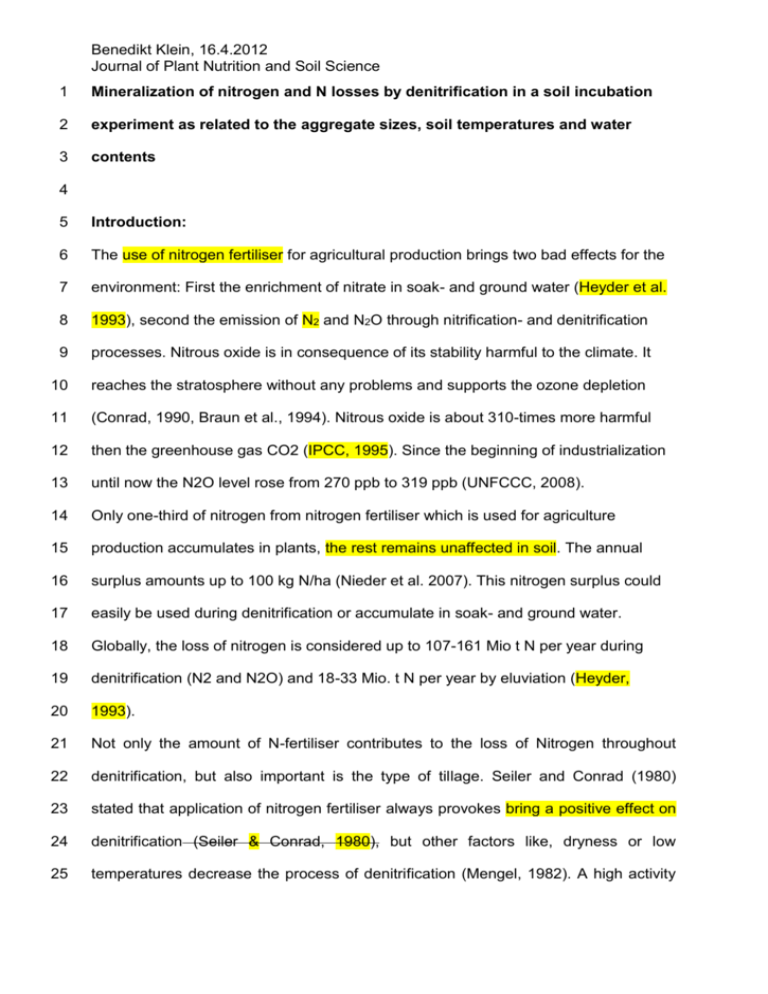
Benedikt Klein, 16.4.2012 Journal of Plant Nutrition and Soil Science 1 Mineralization of nitrogen and N losses by denitrification in a soil incubation 2 experiment as related to the aggregate sizes, soil temperatures and water 3 contents 4 5 Introduction: 6 The use of nitrogen fertiliser for agricultural production brings two bad effects for the 7 environment: First the enrichment of nitrate in soak- and ground water (Heyder et al. 8 1993), second the emission of N2 and N2O through nitrification- and denitrification 9 processes. Nitrous oxide is in consequence of its stability harmful to the climate. It 10 reaches the stratosphere without any problems and supports the ozone depletion 11 (Conrad, 1990, Braun et al., 1994). Nitrous oxide is about 310-times more harmful 12 then the greenhouse gas CO2 (IPCC, 1995). Since the beginning of industrialization 13 until now the N2O level rose from 270 ppb to 319 ppb (UNFCCC, 2008). 14 Only one-third of nitrogen from nitrogen fertiliser which is used for agriculture 15 production accumulates in plants, the rest remains unaffected in soil. The annual 16 surplus amounts up to 100 kg N/ha (Nieder et al. 2007). This nitrogen surplus could 17 easily be used during denitrification or accumulate in soak- and ground water. 18 Globally, the loss of nitrogen is considered up to 107-161 Mio t N per year during 19 denitrification (N2 and N2O) and 18-33 Mio. t N per year by eluviation (Heyder, 20 1993). 21 Not only the amount of N-fertiliser contributes to the loss of Nitrogen throughout 22 denitrification, but also important is the type of tillage. Seiler and Conrad (1980) 23 stated that application of nitrogen fertiliser always provokes bring a positive effect on 24 denitrification (Seiler & Conrad, 1980), but other factors like, dryness or low 25 temperatures decrease the process of denitrification (Mengel, 1982). A high activity Benedikt Klein, 16.4.2012 Journal of Plant Nutrition and Soil Science 26 of soil microbes depends on the aggregate size, there is more microbe activity in 27 small than in big aggregates once (Albers B.P., 1993). 28 Up to 70 % of N2O-emission come from the microbiological processes of nitrification 29 and denitrification (Oenema et al., 2001). 30 Nitrification benefits from high oxygen concentrations, a soil water level of pF 2.7, a 31 neutral pH and moderate temperatures (20-25°C). However, denitrification is 32 favoured by anaerobic conditions, high temperatures (over 25°C, minimum 0-5°C), 33 high water content as well as high levels of nitrate and organic components. The 34 effect of high- temperature and soil water levels on denitrification is well documented 35 (Beck, 1979, Abou-Seada, 1986). 36 37 With this background, the presented paper describes the dependence of high 38 temperature and soil water as a function of the microbe activity in small aggregates 39 (2 mm). With this knowledge, the loss of nitrogen and the N-mineralization is 40 expected to be considerably lower in small soil aggregates than in the bigger ones. It 41 should be shown that the influence of small aggregates on lowering the nitrogen loss 42 by denitrification is an important factor maybe more important than only the effect of 43 high- water and temperature levels.



